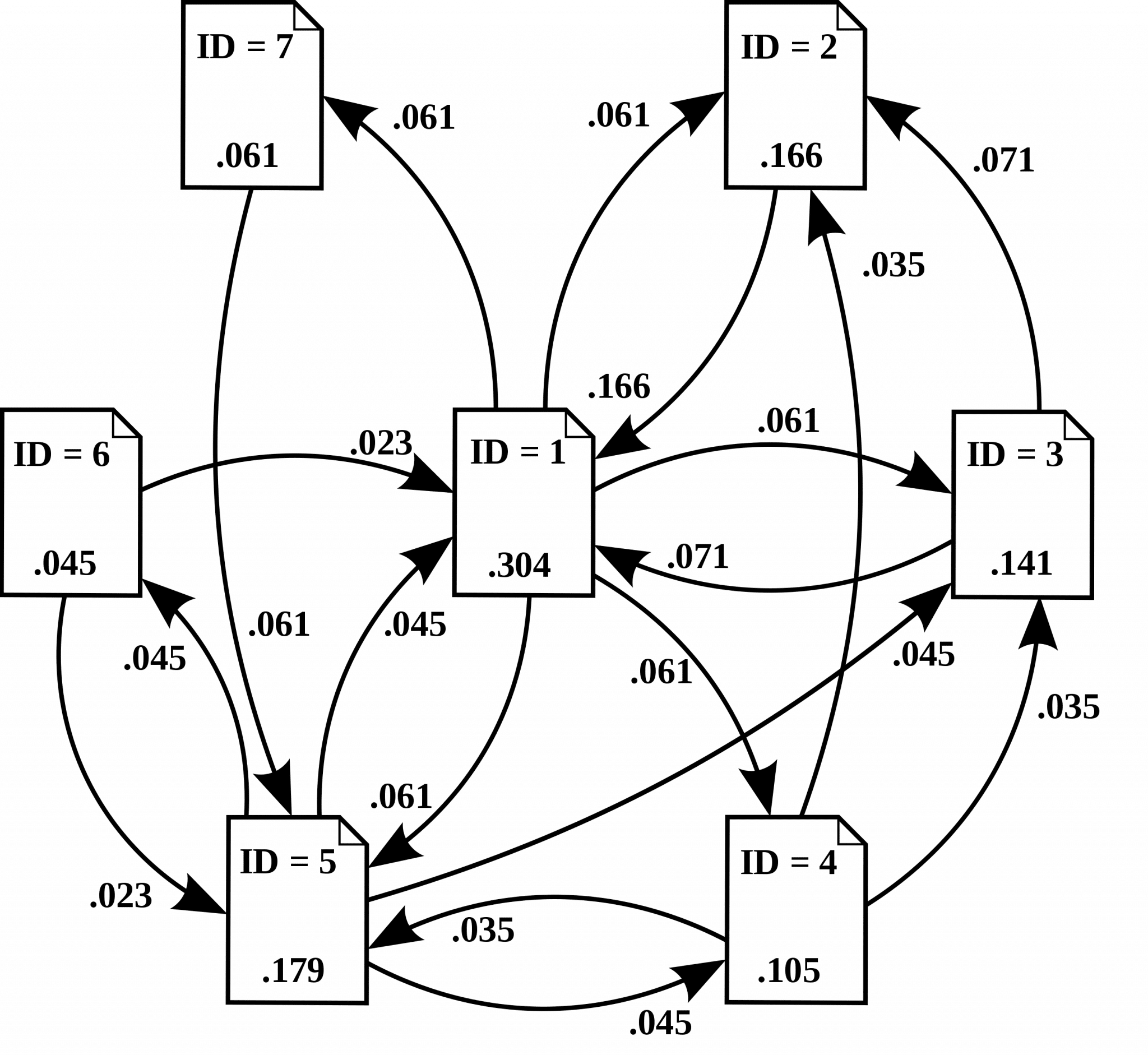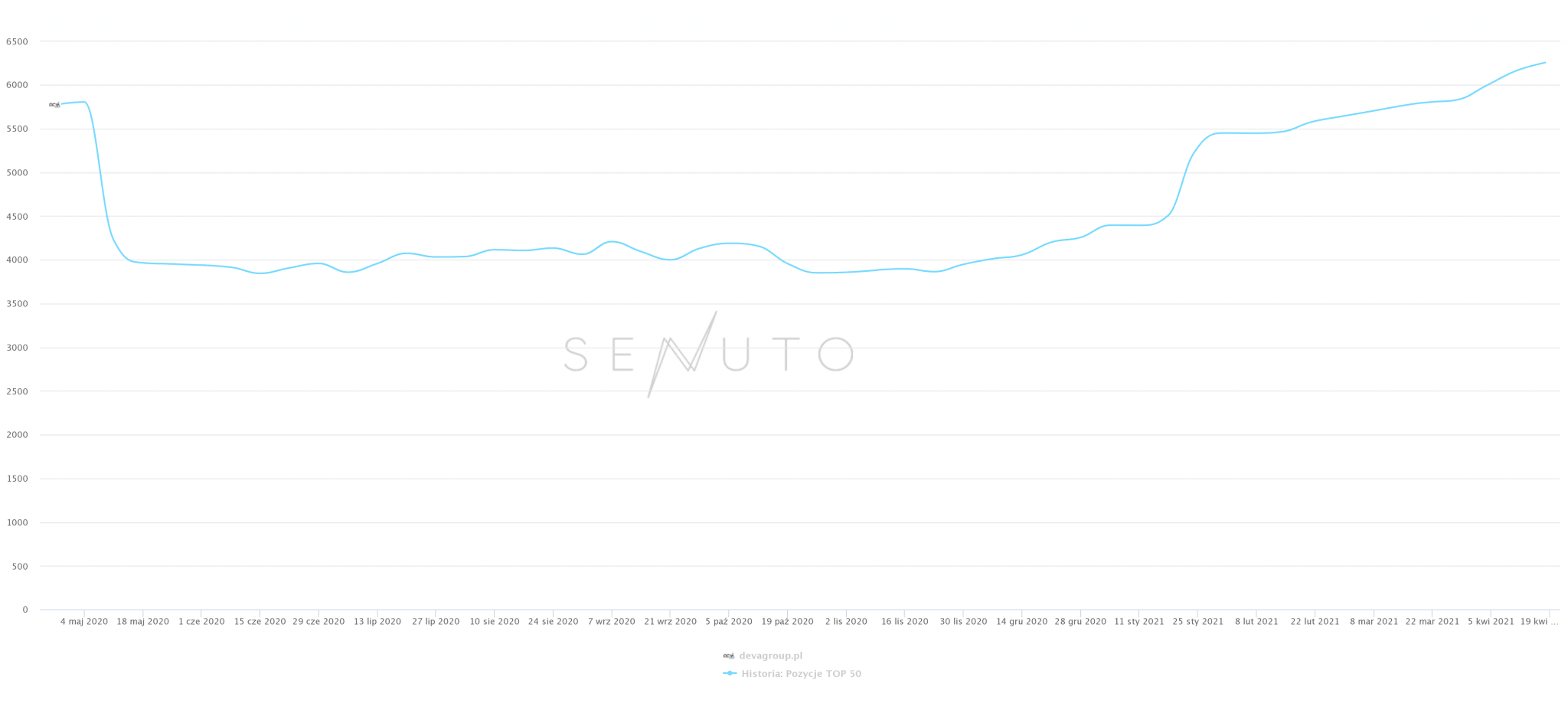What is Page Rank? Page Rank was one of the first Google algorithms I encountered. Its name comes from its creator Larry Page. For years, it was the foundation of effective SEO, and the SEO industry flourished in terms of link sales offers aimed at raising the PageRank of a given domain. Each domain could receive a rating on a scale of 0 to 10. The better the rating, the naturally higher its power, visibility and positions.

How Page Rank flowed
.
Page Rank was mainly based on the flow of power through links. How the transfer of such power took place is illustrated in the chart below:

The amount of “PR flow” was most likely calculated by the formula below:

Where:
- PR – PageRank of a given page
- d – attenuation factor, a number between 0 and 1. For calculations, a value of 0.85 is usually taken
- N – number of web pages
- L – the number of links to which a given website links
.
.
.
.
Page Rank and spam generated by seers
.
As I mentioned, Page Rank was based on the power flow of external and internal links. Wanting to position your site,you had to provide large amounts of links from sites with high Page Rank, to the main domain and subpages of your site.
It is worth mentioning that in the heyday of this determinant, positioners did not bother much about the quality and uniqueness of content, mobility, speed, usability of websites or other on-site activities. What mattered was mainly the number of links and the “power” they brought with them. So everything was a matter of scaling the link acquisition process.
As you can easily guess, this led to the creation of huge amounts of backlinks, in the form of directories, pretzels (such blogs), various creations with sleepers, descriptions for chatter and the generation of ubiquitous spam. Hand in hand with the backlinks, of course, went the appropriate scripts and applications automating the link acquisition process, such as Publiker, Seo Adder and, later on, even more advanced software. All this in order to acquire as much “green juice” as possible, which was Page Rank.
In practice, those proficient in SEO and IT could manipulate Page Rank very effectively and buoy the positions of selected sub-pages.
Google’s suppression of Page Rank
.
According to Wikipedia, the process of extinguishing this algorithm by Google beganaround 2009. The last time Google updated it was in 2013, andin 2016, the Page Rank checking tool was completely removed from Google. However, this does not mean that the algorithm has been retired by Google. It is speculated that despite the fact that it is no longer possible to check the “Page Rank” for a given domain, Google still uses the algorithm, just in a newer and updated form – the power of SEO links is still flowing, after all.
Of course, we need to be aware that since 2009, SEO has seen a huge number of new and more advanced algorithms, which have additionally been upgraded and improved over the years, and which also affect website positions.
Study “Page Rank” nowadays
.
A number of proprietary solutions have emerged on the market that make it easier to research “Page Rank” and determine the power of a given domain – Ahrefs has Domain Rating, and Majestic Trust Flow and Citation Flow. The invariable determinant of “domain power” also remains, of course, good old visibility:
 .
.
 Łukasz Suchy
Łukasz Suchy